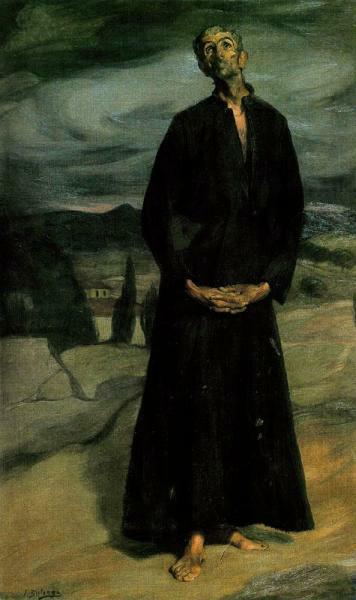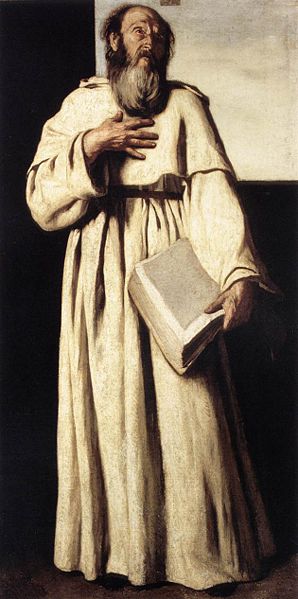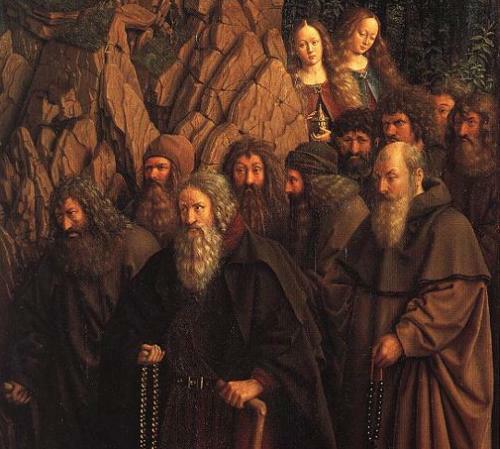Society seems to pursue a biological imperative. People follow a track of survival and socialization that mimics basic animal instincts to reproduce themselves, their ideas, their culture — at an urgent, even frenetic (seen from a long view) pace. In one of his lectures, popular philosopher Alan Watts said that seen from a distant planet, the Earth would look like a series of organisms which, upon daylight takes in through its ganglia liquid nutrient, and then after a time disgorges it — always in a sequence, every 24 hours. Such is the world, specifically the modern technological world.
To get out of this as an individual is an enormous task, ultimately perhaps futile. Escaping it means not so much criticizing technology and structures around us, though we must preliminarily. More deeply it means rebelling against all animal instinct, including the comfort of survival taken for granted in the material conditions of society. We do not need merely food, shelter, and transportation to survive but depend on a network (a ganglia, to use Watts’ image) to supply these needs regularly, dependably, and in a psychologically satisfying way. This means “buying into” the structures of socialization, accepting the facelessness that is part of the social contract of technological society in exchange for survival and assigned peripherals. Who can gather the spiritual and psychological resources to break from this network? And, if it is not possible or feasible, how can one live with insight and wisdom without madness?
Simplicity provides a path for disengagement in the material sense of consumption (whether of food, popular culture, or socialization), but deeper mental resources are needed to make the individual disengagement that brings contentment and not mere sustainability. Although we may reach a point of pride in our ability to gain material sustainability, most people must work, pay bills, care for their children or elders, maintain their possessions, stay healthy, etc. Only the historical hermits have reached a point of equanimity in renouncing all of these animal concerns. Only the spiritual-minded have reached a point where they can accept what comes without resentment, guilt, or memory.
We may speculate that one who is not psychologically or physically prepared for the rigors of eremitism may end up reverting to a worse animality than that of the cog in society, True animals, of course, can do this — the lab-bred animal is much better off in the wild, but its instincts have been destroyed and now it is a mere organism, trapped between a laboratory prison versus probable inability to survive in the wild, a wilderness increasingly being destroyed anyway. Can a hermit expect better? Can we put our mental and psychological resources to work to solve this conundrum?
Emerson’s famous poem “Good-bye” expresses an attempt to disengage from the world while still taking with oneself the book-learning reflectiveness, the positive example of others (dead or living) and the survival skills of food-growing and shelter-making. How much of the latter tactile skills he had — Emerson, or his colleague Thoreau — is another but fascinating angle to the issue of social disengagement, one about which the historical hermits have much to offer. True enough that once we have taken formal knowledge and seasoned it with reflection, then nature will do its work to further refine reflection into wisdom.
But does it require Emerson’s intellect in order to get to this point, Emerson’s social status and (let’s be frank) wealth or comfort in order to have something to fall back on in case the adventure doesn’t work? Or can we go farther and give that up, too, like William Blake or Leon Bloy, the artists-poets, living in perpetual poverty who nevertheless doggedly carried on their creativity to the end? They lived in society, in the very midst of it, yet their rebellion was more of the character of a sophisticated engagement rather than a physical disengagement and disappearance. Thankfully, for us, we are able to see and read the products of such creativty. Yet do we not long to get creativity directly from nature, to mollify the pain and sorrow inflicted by the world, to say good-bye to it, once and for all?
The spirit (heart, soul, consciousness, mind) is willing, but the flesh — the animal instincts for survival, a niche, compatibility with others — is our downfall.
Here is Emerson:
Good-bye, proud world, I’m going home,
Thou art not my friend, and I’m not thine;
Long through thy weary crowds I roam;
A river-ark on the ocean brine,
Long I’ve been tossed like the driven foam,
But now, proud world, I’m going home.
Good-bye to Flattery’s fawning face,
To Grandeur, with his wise grimace,
To upstart Wealth’s averted eye,
To supple Office low and high,
To crowded halls, to court, and street,
To frozen hearts, and hasting feet,
To those who go, and those who come,
Good-by, proud world, I’m going home.
I’m going to my own hearth-stone
Bosomed in yon green hills, alone,
A secret nook in a pleasant land,
Whose groves the frolic fairies planned;
Where arches green the livelong day
Echo the blackbird’s roundelay,
And vulgar feet have never trod
A spot that is sacred to thought and God.
Oh, when I am safe in my sylvan home,
I tread on the pride of Greece and Rome;
And when I am stretched beneath the pines
Where the evening star so holy shines,
I laugh at the lore and the pride of man,
At the sophist schools, and the learned clan;
For what are they all in their high conceit,
When man in the bush with God may meet.



